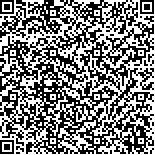下载中心
优秀审稿专家
优秀论文
相关链接
摘要

从行星遥感海量数据中对地形地貌特征进行识别和分类,是行星科学研究中的一项重要基础工作。本文综述了自实施月球和深空探测任务以来,国际、国内采用行星影像数据进行地形地貌识别与分类技术的研究进展。首先,从月球、火星以及其他行星探测任务3个方面,对相关的探测任务和获取的影像数据进行简介。然后,在介绍通用目标识别与分类方法研究进展的基础上,分别详细阐述了月球、火星、其他行星影像数据的目标识别与分类研究进展,具体包括:(1)在月球影像目标识别与分类研究进展中,从月球表面环形构造识别,线性构造识别,以及地形分类几个方面展开详述;(2)在火星影像目标识别与分类研究进展中,从构造地貌,风成地貌,水成地貌,其他地貌的识别与地形分类几个方面的研究进展进行详述;(3)其他行星影像目标识别与分类研究进展中,从太阳系的其他类地行星和小行星的影像目标识别与地形分类研究进展进行阐述,其中针对小行星近距离飞越探测、绕飞探测、附着就位探测和表面采样返回等探测方式,分别介绍了对其影像数据的目标识别与地形分类的研究进展。最后,对行星遥感影像目标识别和分类技术的未来发展方向进行了展望和探讨。
Planetary remote sensing images are an important data source for planetary observations and are the basis for qualitative and quantitative analysis of the planet’s surface. Analyzing the features of the planet’s surface based on remote sensing images and recognizing and classifying topographic features from massive planetary remote sensing data are significant fundamental tasks in planetary science research. In this new era for deep space exploration and development, multiple missions from different countries and agencies are being implemented. Accordingly, enormous amount of data will be obtained, and this situation requires using automatic target recognition and terrain classification technologies. This study systematically reviews and summarizes the research progress and advances of topography and landform recognition and classification technologies using planetary image data since the start of lunar and deep space exploration missions. First, the moon, Mars, and other planetary exploration missions and the acquired image data are briefly described. After a short introduction to the research progress of general target recognition and classification techniques, the applications of these techniques using the image data of the moon, Mars, and other planets are then elaborated as follows. (1) For lunar images, review of target recognition and classification progress is detailed in three aspects: recognition of the circular structure (i. e., crater), recognition of linear structure (e.g., wrinkle ridge), and terrain classification of the lunar surface. (2) For Mars images, the detailed advances including recognition of tectonic (e. g., crater and volcano), aeolian (e.g., slope streak, sand dune, and dust devil track), fluvial landforms (e.g., channel and gully), and other features (e.g., rock), as well as terrain classification of the Martian surface, are elaborated. (3) For target recognition and classification from other planetary images, the study introduces the research advances on other terrestrial planets (e.g., Mercury and Venus) in the solar system and asteroids that have been explored. Specifically, the asteroid parts are elaborated according to different exploration approaches: close flyby, orbiting, anchoring, and sample acquisition. Finally, future research directions of target recognition and classification using planetary image data are discussed. The future research directions include (1) target recognition and classification using multi-source data: data from different types of sensors, data of different resolutions, and data from different platforms and time; (2) automatic recognition and classification using unsupervised approach; and (3) multi-task image intelligence applications. Achieving high-precision automatic recognition and classification of the planetary surface is still challenging because of the complex environment and featureless texture of the planetary surface. In the future, automatic recognition and classification will surely play increasingly important roles in supporting planetary exploration engineering missions and scientific research through the continuous improvement in data quality and development of related field technologies.

